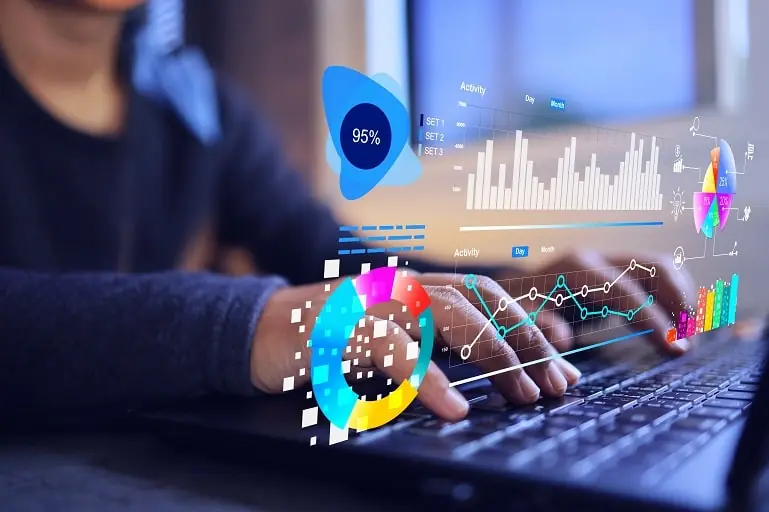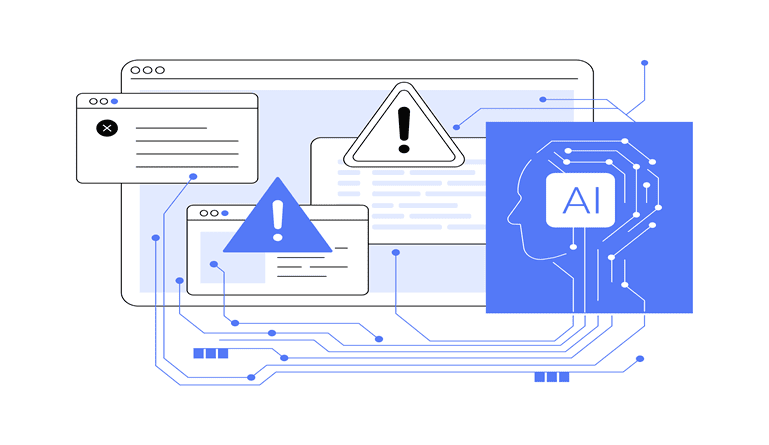In today’s data-driven world, businesses constantly seek ways to stay ahead of the curve and make informed decisions. One powerful tool that has emerged as a game-changer is predictive analytics. By harnessing the power of historical data, statistical algorithms, and machine learning, predictive analytics enables organizations to accurately forecast future outcomes and identify emerging trends. In this comprehensive guide, we’ll explore how predictive analytics is revolutionizing trend identification and shaping the future of business strategy.
What is Predictive Analytics?
Predictive analytics is a branch of advanced analytics that uses historical data, statistical algorithms, and machine learning techniques to identify the likelihood of future outcomes. Unlike traditional analytics that focuses on what has happened, predictive analytics provides insights into what could happen in the future. This forward-looking approach allows businesses to anticipate changes, identify opportunities, and mitigate risks before they materialize.
At its core, predictive analytics involves collecting large volumes of data, processing it through sophisticated models, and generating predictions or probabilities of future events. These predictions can range from customer behavior and market trends to equipment failures and financial risks.
Why Identifying Trends is Crucial for Business Success
In an era of rapid technological advancements and shifting consumer preferences, identifying trends has become more critical than ever for business success. Here’s why:
-
Competitive Advantage
Companies that can spot trends early gain a significant edge over their competitors, allowing them to innovate and adapt faster.
-
Informed Decision Making
Trend identification provides valuable insights that inform strategic decisions, from product development to market expansion.
-
Risk Mitigation
By anticipating future trends, businesses can proactively address potential challenges and minimize risks.
-
Resource Optimization
Understanding trends helps companies allocate resources more effectively, focusing on areas with the highest potential for growth.
-
Customer Satisfaction
Identifying consumer trends enables businesses to meet evolving customer needs and preferences, enhancing satisfaction and loyalty.
Successful companies like Amazon, Netflix, and Starbucks have leveraged trend identification to drive their growth strategies. For instance, Netflix’s recommendation system, powered by predictive analytics, has been crucial in identifying viewing trends and delivering personalized content to its users.
The Role of Predictive Analytics in Trend Identification
Predictive analytics plays a pivotal role in trend identification by analyzing vast amounts of data to uncover patterns and relationships that may not be immediately apparent. Here’s how it works:
-
Pattern Recognition
Predictive models can identify recurring patterns in data that may indicate emerging trends.
-
Anomaly Detection
By establishing baselines, predictive analytics can spot deviations that might signal new trends or shifts in existing ones.
-
Correlation Analysis
Predictive analytics can reveal hidden correlations between different variables, uncovering trends that span multiple domains.
-
Time Series Analysis
This technique helps in understanding how trends evolve over time, enabling more accurate forecasting.
-
Sentiment Analysis
By analyzing social media and customer feedback data, predictive analytics can identify shifts in public opinion and emerging consumer trends.
For example, in the retail sector, predictive analytics can analyze purchase history, browsing behavior, and demographic data to identify emerging fashion trends. In healthcare, it can analyze patient data and research findings to predict the spread of diseases or the effectiveness of new treatments.
( Also Read: Predictive Analytics: The Intersection of Fintech and Martech )
Key Data Sources for Predictive Analytics
The effectiveness of predictive analytics in trend identification heavily depends on the quality and relevance of the data used. Some key data sources include:
-
Customer Data
This includes purchase history, browsing behavior, demographic information, and customer service interactions.
-
Market Data
Economic indicators, competitor information, and industry reports provide valuable context for trend analysis.
-
Social Media Data
Social platforms offer real-time insights into consumer opinions, preferences, and emerging topics.
-
Transactional Data
Sales data, financial transactions, and inventory movements can reveal business and economic trends.
-
Sensor Data
IoT devices and sensors provide real-time data on equipment performance, environmental conditions, and more.
-
Public Data
Government statistics, census data, and open datasets can offer broader societal and economic trend insights.
The key to effective trend identification lies in integrating these diverse data sources and ensuring data quality through proper cleansing, normalization, and validation processes.
Core Techniques in Predictive Analytics for Trend Identification
Several techniques are commonly used in predictive analytics for trend identification:
-
Regression Analysis
This technique helps in understanding the relationship between variables and predicting future values based on historical data.
-
Time Series Analysis
Ideal for identifying trends over time, this method analyzes data points collected at consistent intervals.
Machine Learning Algorithms:
- Decision Trees: Help in classifying data and identifying decision paths that lead to certain outcomes.
- Random Forests: An ensemble learning method that combines multiple decision trees for more accurate predictions.
- Neural Networks: Powerful for identifying complex patterns in large datasets.
-
Clustering
This technique groups similar data points together, helping to identify segments or categories within a dataset.
-
Association Rule Learning
Used to discover interesting relations between variables in large databases.
Each technique has its strengths and is suited to different types of trend identification tasks. The choice of technique depends on the nature of the data and the specific trends being sought.
Tools and Technologies for Predictive Analytics
A wide range of tools and technologies are available for predictive analytics:
- Python: A versatile programming language with powerful libraries like Pandas, Scikit-learn, and TensorFlow for data analysis and machine learning.
- R: A statistical programming language widely used in academia and research for advanced statistical analysis and data visualization.
- SAS: A comprehensive suite of business intelligence and analytics tools, popular in large enterprises.
- Tableau: A data visualization tool that can integrate with predictive models to create interactive trend visualizations.
- Google Analytics: Offers predictive capabilities for website traffic and user behavior analysis.
- IBM SPSS: A statistical software suite with strong predictive modeling capabilities.
- RapidMiner: A data science platform that provides an integrated environment for data prep, machine learning, and model deployment.
The choice of tool depends on factors such as the organization’s size, technical expertise, budget, and specific analytical needs.
Building a Predictive Model for Trend Identification
Creating a predictive model for trend identification involves several key steps:
- Define Objectives: Clearly articulate what trends you’re looking to identify and why.
- Data Collection: Gather relevant data from various sources, ensuring it’s comprehensive and representative.
- Data Preparation: Clean, normalize, and transform the data to make it suitable for analysis.
- Feature Selection: Identify the most relevant variables that could indicate trends.
- Model Selection: Choose the appropriate predictive technique based on your data and objectives.
- Model Training: Use historical data to train your model.
- Model Validation: Test the model on a separate dataset to ensure its accuracy and generalizability.
- Model Deployment: Implement the model in your business processes.
- Monitoring and Refinement: Continuously monitor the model’s performance and refine it as new data becomes available.
To improve model accuracy, consider techniques like ensemble modeling, regularization, and cross-validation. Regular retraining of the model with new data is also crucial to maintain its predictive power.
Case Studies: Predictive Analytics in Action
Let’s look at two real-world examples of predictive analytics in trend identification:
-
Retail Giant Walmart
Walmart uses predictive analytics to forecast product demand and optimize inventory. By analyzing factors like historical sales data, weather patterns, and local events, Walmart can predict which products will be in high demand in specific locations. This has led to significant improvements in stock management and customer satisfaction.
-
Healthcare Provider Kaiser Permanente
Kaiser Permanente employs predictive analytics to identify patients at high risk of developing certain conditions. By analyzing patient data, including medical history, lifestyle factors, and genetic information, they can predict health trends and intervene early, leading to better patient outcomes and reduced healthcare costs.
These case studies demonstrate the power of predictive analytics in identifying trends across different industries and its potential to drive significant business value.
Common Challenges in Using Predictive Analytics for Trend Identification
While powerful, predictive analytics comes with its set of challenges:
- Data Quality Issues: Inaccurate or incomplete data can lead to flawed predictions.
- Model Accuracy: Ensuring the model remains accurate over time as conditions change can be challenging.
- Interpretability: Complex models can be difficult to interpret, making it hard to explain predictions to stakeholders.
- Skill Gap: There’s often a shortage of skilled professionals who can effectively implement and manage predictive analytics projects.
- Integration with Existing Systems: Incorporating predictive analytics into existing business processes can be technically challenging.
To overcome these challenges, organizations should invest in data quality management, regularly validate and update their models, focus on model interpretability, provide training for staff, and plan for seamless integration with existing systems.
( Also Read: Enhancing Financial Forecasting with Predictive Analytics )
The Future of Predictive Analytics in Trend Identification
The future of predictive analytics in trend identification looks promising, with several exciting developments on the horizon:
-
AI Integration
Artificial Intelligence, particularly deep learning, will enhance the capabilities of predictive models, enabling them to identify more complex and subtle trends.
-
Real-time Analytics
Advances in processing power and edge computing will enable real-time trend identification and prediction.
-
Big Data Analytics
As data volumes continue to grow, predictive analytics will become more powerful in identifying trends across vast and diverse datasets.
-
Automated Machine Learning (AutoML)
This will make predictive analytics more accessible to non-experts, democratizing trend identification capabilities.
-
Explainable AI
Developments in this area will make complex predictive models more interpretable, increasing trust and adoption.
These advancements will enable businesses to identify trends with greater accuracy, speed, and granularity, leading to more agile and data-driven decision-making.
Practical Tips for Getting Started with Predictive Analytics
For businesses looking to implement predictive analytics for trend identification, here are some practical tips:
- Start with Clear Goals: Define specific objectives for your predictive analytics initiative.
- Start Small: Begin with a pilot project to demonstrate value before scaling up.
- Invest in the Right Tools: Choose tools that align with your technical capabilities and business needs.
- Build a Cross-functional Team: Include members from IT, data science, and relevant business units.
- Focus on Data Quality: Invest in data cleaning and preparation processes.
- Continuous Learning: Stay updated with the latest trends and techniques in predictive analytics.
- Iterate and Improve: Continuously refine your models based on feedback and new data.
Remember, successful implementation of predictive analytics is a journey that requires patience, commitment, and a culture of data-driven decision-making.
Ethical Considerations in Predictive Analytics
As predictive analytics becomes more prevalent, it’s crucial to consider the ethical implications:
-
Data Privacy
Ensure compliance with data protection regulations and respect individual privacy rights.
-
Algorithmic Bias
Be aware of potential biases in your data or models that could lead to unfair predictions.
-
Transparency
Strive for transparency in how predictions are made, especially when they affect individuals.
-
Responsible Use
Use predictive insights responsibly, considering the potential impact on individuals and society.
-
Human Oversight
Maintain human oversight and judgment in decision-making processes, rather than relying solely on predictive models.
By addressing these ethical considerations, businesses can build trust with their stakeholders and ensure the responsible use of predictive analytics.
Measuring the ROI of Predictive Analytics in Trend Identification
To justify investment in predictive analytics, it’s important to measure its return on investment (ROI). Key metrics to consider include:
-
Increased Revenue
Measure the additional revenue generated from acting on identified trends.
-
Cost Savings
Quantify the costs avoided through better resource allocation and risk mitigation.
-
Improved Efficiency
Measure improvements in operational efficiency resulting from predictive insights.
-
Enhanced Customer Satisfaction
Track improvements in customer satisfaction scores and retention rates.
-
Time-to-Market
Measure reductions in time-to-market for new products or services.
-
Prediction Accuracy
Track the accuracy of your predictive models over time.
By consistently measuring these KPIs, businesses can demonstrate the value of their predictive analytics initiatives and justify further investments.
How to Integrate Predictive Analytics with Existing Business Processes
Integrating predictive analytics into existing business processes is crucial for maximizing its impact. Here are some strategies:
-
Identify Integration Points
Determine where predictive insights can add value in your current processes, such as in demand forecasting, risk assessment, or customer segmentation.
-
Data Integration
Ensure your predictive analytics system can access and process data from various business systems like CRM, ERP, and marketing automation tools.
-
API Development
Create APIs that allow your predictive models to interact with other business applications in real-time.
-
Workflow Automation
Incorporate predictive insights into automated workflows to enable proactive decision-making.
-
Dashboards and Reporting
Integrate predictive insights into existing dashboards and reports to provide a comprehensive view of both historical and future trends.
-
Training and Change Management
Provide training to employees on how to interpret and act on predictive insights within their roles.
-
Continuous Feedback Loop
Establish mechanisms to capture the outcomes of decisions made based on predictive insights, using this feedback to refine your models.
By seamlessly integrating predictive analytics into existing processes, businesses can ensure that trend identification becomes an integral part of their decision-making framework.
Building a Data-Driven Culture to Support Predictive Analytics
The success of predictive analytics in trend identification largely depends on fostering a data-driven culture within the organization. Here’s how to cultivate such a culture:
-
Leadership Buy-in
Secure support from top management to prioritize data-driven decision-making across the organization.
-
Data Literacy Programs
Implement training programs to improve data literacy at all levels of the organization.
-
Accessibility of Data and Insights
Make data and predictive insights easily accessible to employees who need them, while maintaining proper security measures.
-
Encourage Experimentation
Create an environment where employees feel empowered to test hypotheses and make decisions based on data.
-
Celebrate Data-Driven Wins
Recognize and reward successful applications of predictive insights in identifying trends and driving business outcomes.
-
Cross-functional Collaboration
Encourage collaboration between data scientists, IT professionals, and business units to ensure predictive analytics aligns with business needs.
-
Continuous Learning
Foster a culture of continuous learning about new data analysis techniques and technologies.
By building a data-driven culture, organizations can ensure that predictive analytics becomes more than just a tool – it becomes a fundamental part of how the business operates and identifies trends for future success.
Final Thoughts: Embracing Predictive Analytics for Future Success
Predictive analytics has emerged as a powerful tool for identifying trends and shaping business strategy. By leveraging historical data, advanced algorithms, and machine learning, businesses can gain valuable insights into future trends, enabling them to make proactive decisions and stay ahead of the competition.
As we’ve explored in this guide, implementing predictive analytics for trend identification involves choosing the right data sources, techniques, and tools, as well as overcoming challenges related to data quality, model accuracy, and ethical considerations. However, the potential benefits – from improved decision-making and resource allocation to enhanced customer satisfaction and competitive advantage – make it a worthwhile investment for forward-thinking organizations.
As predictive analytics continues to evolve, driven by advancements in AI and big data technologies, its role in trend identification will only grow more significant. Businesses that embrace predictive analytics today will be well-positioned to navigate the uncertainties of tomorrow, turning data into a strategic asset that drives innovation and growth.
The future belongs to those who can not only adapt to trends but anticipate them. With predictive analytics, businesses have a powerful ally in shaping that future.







